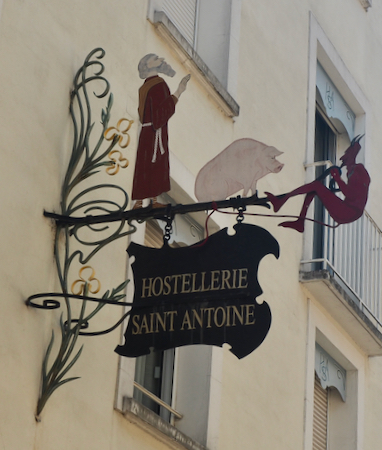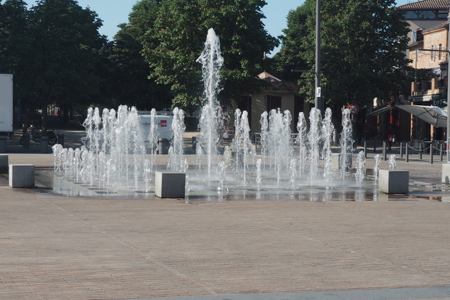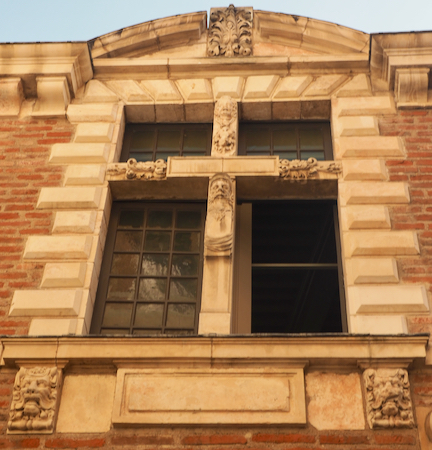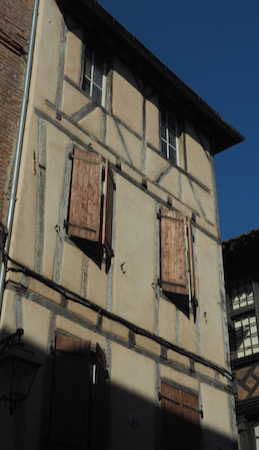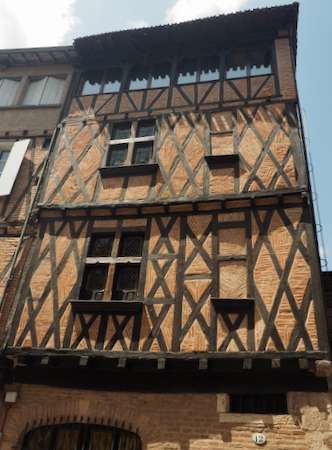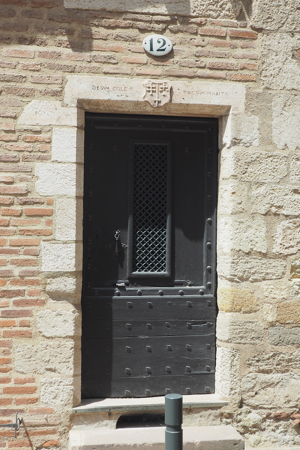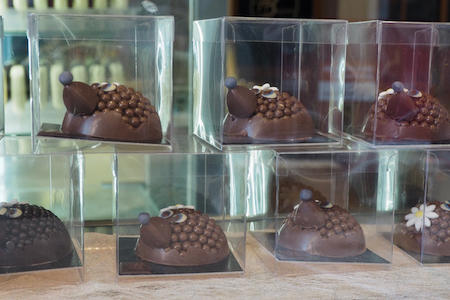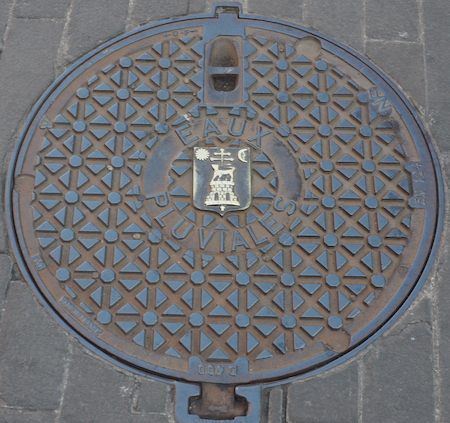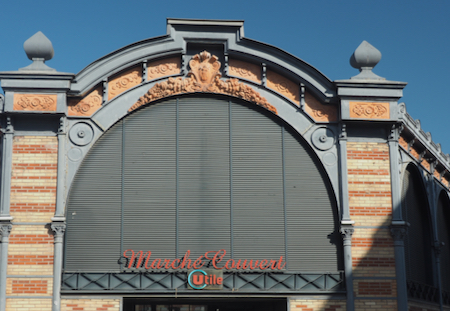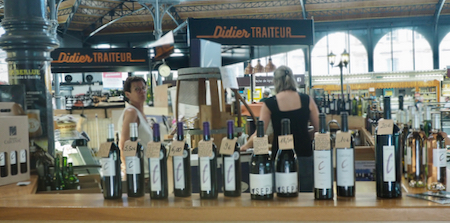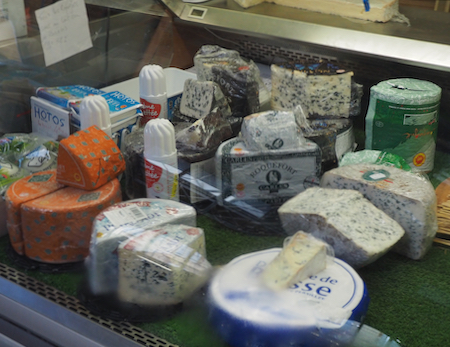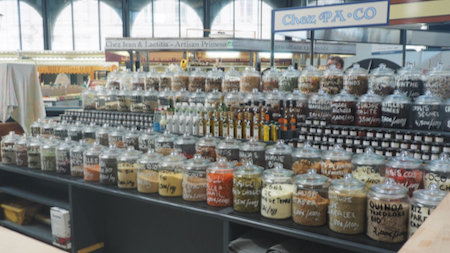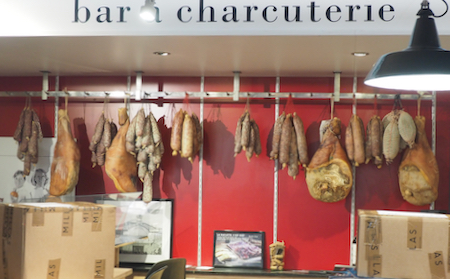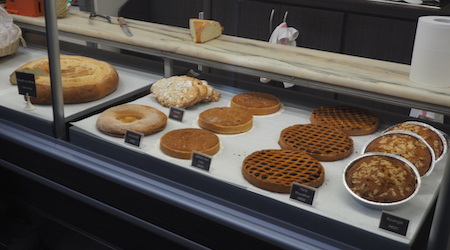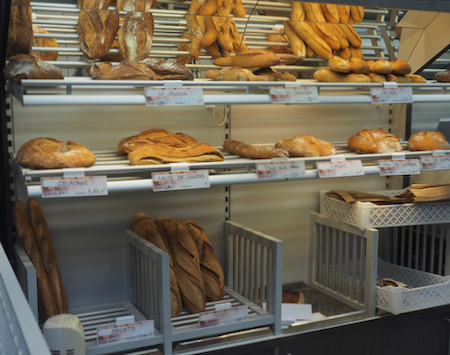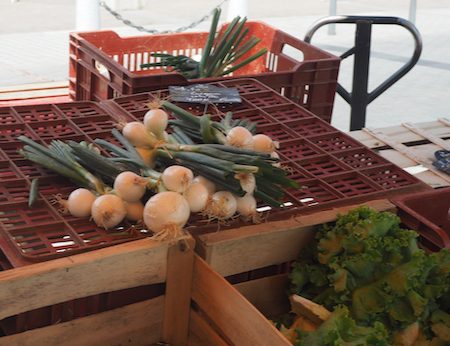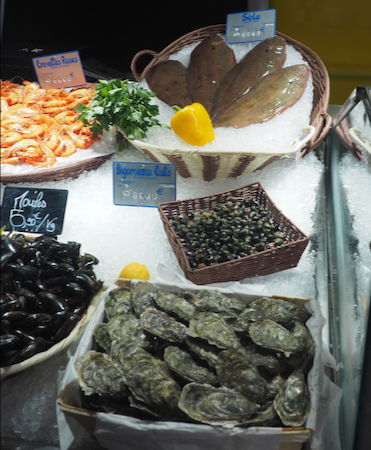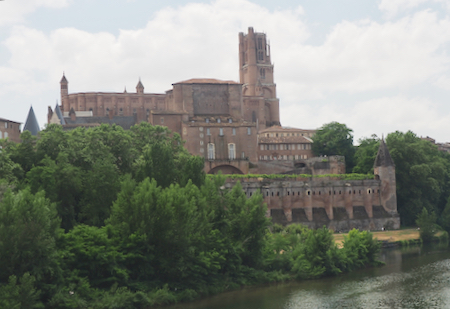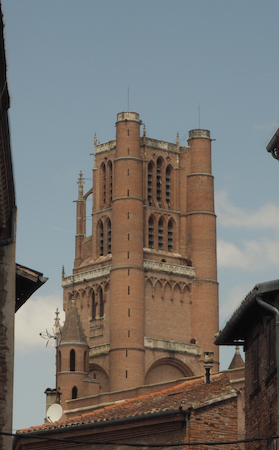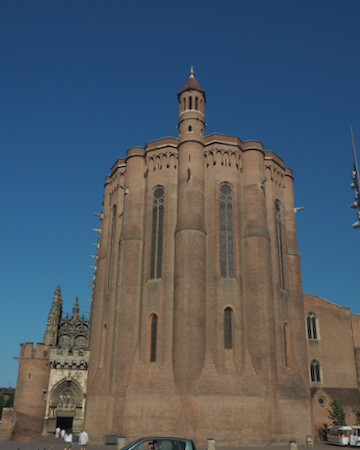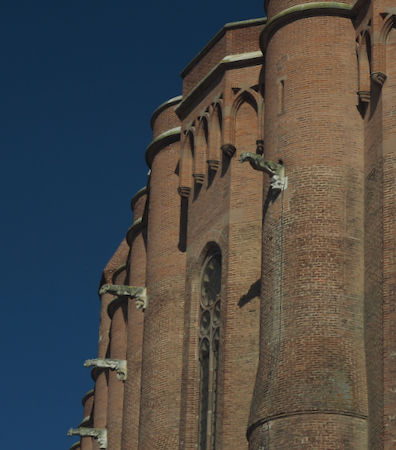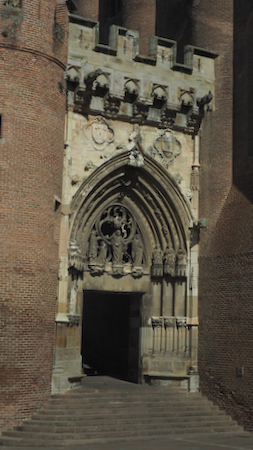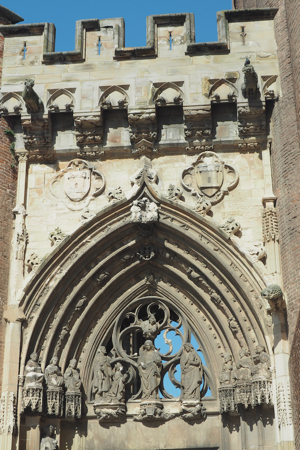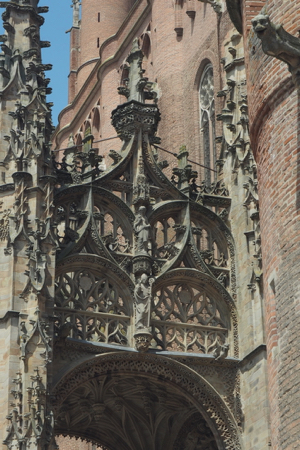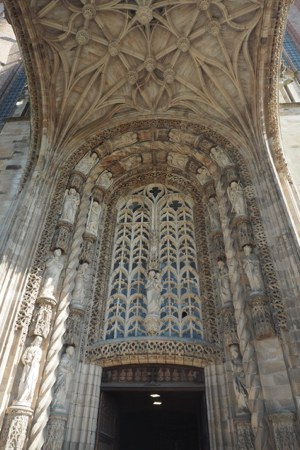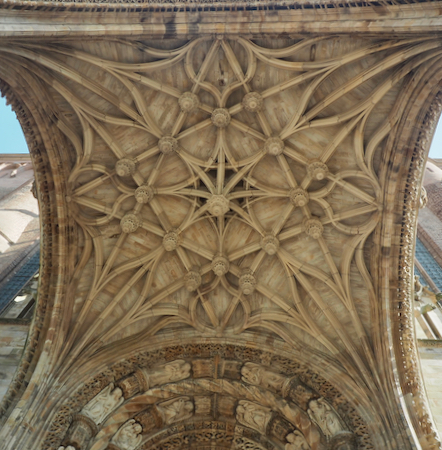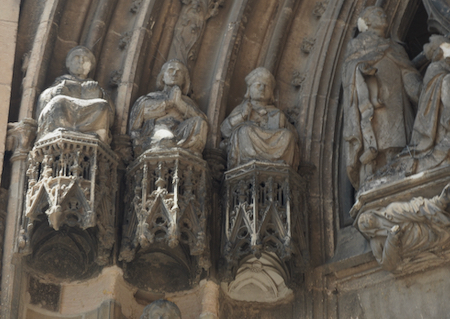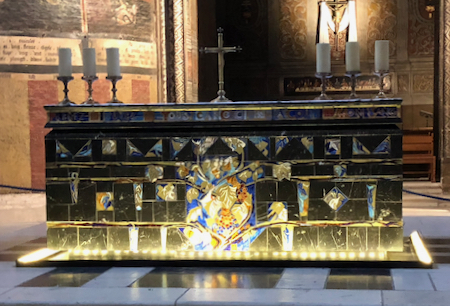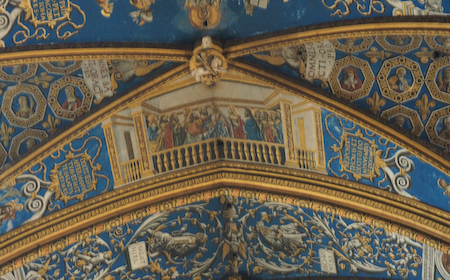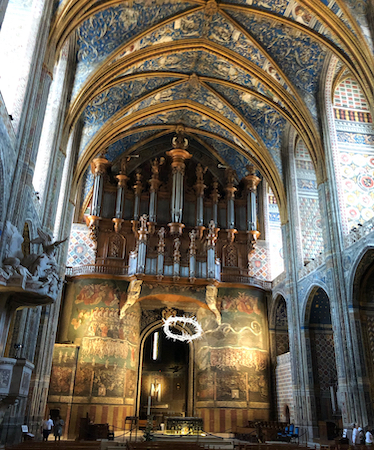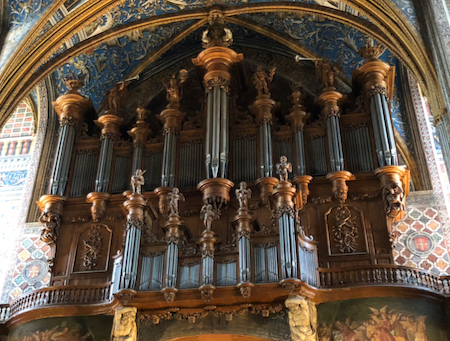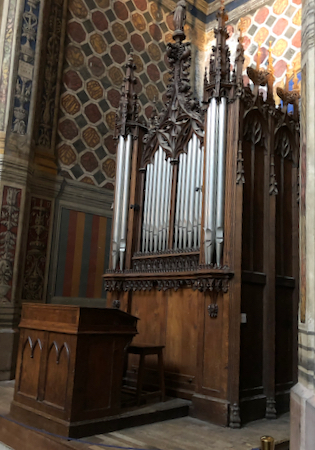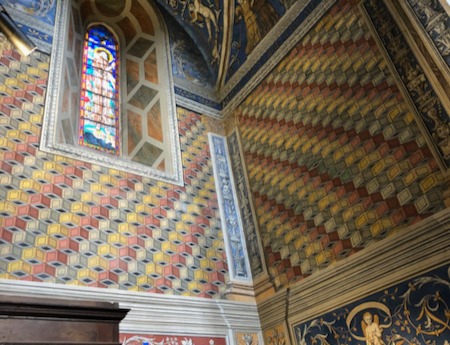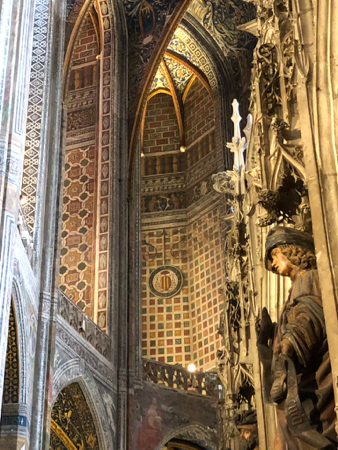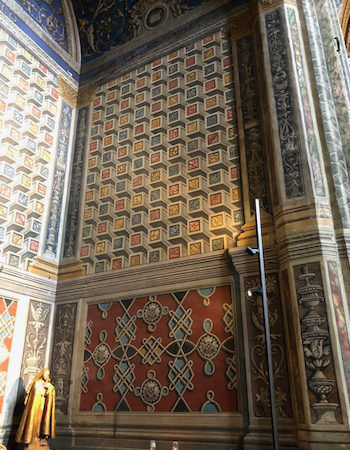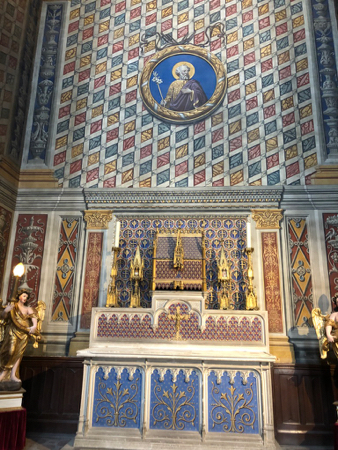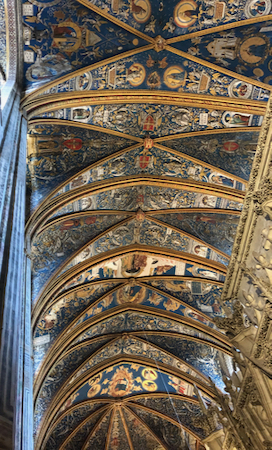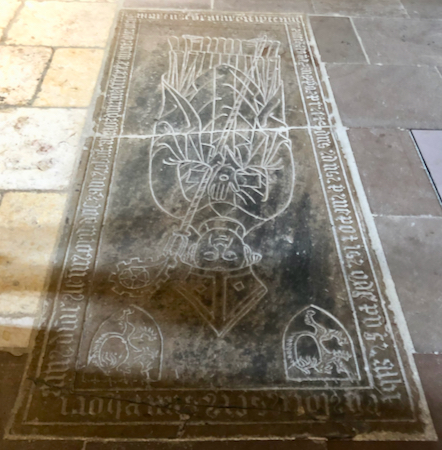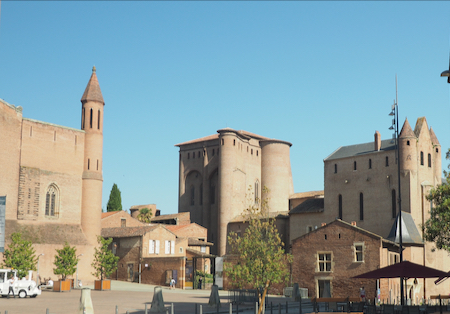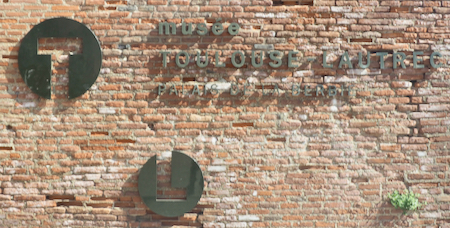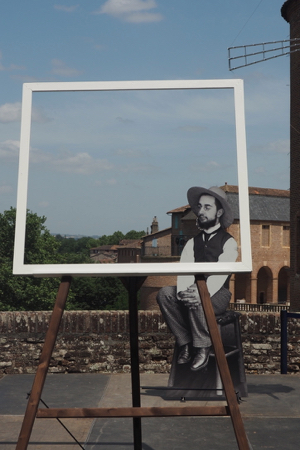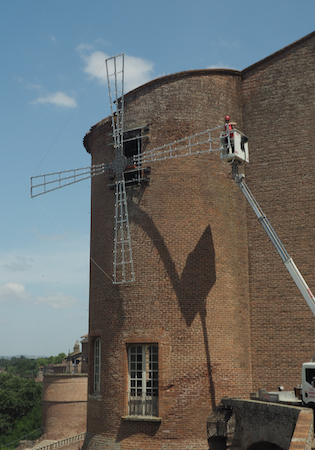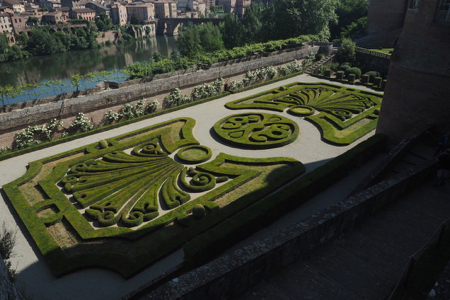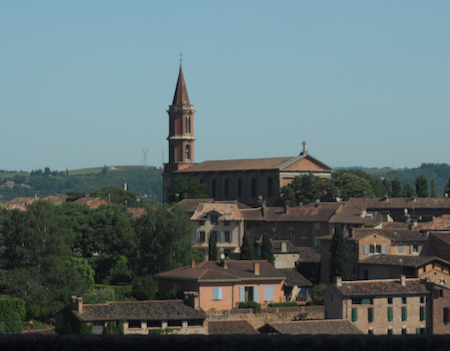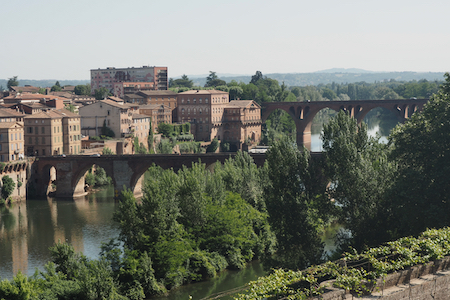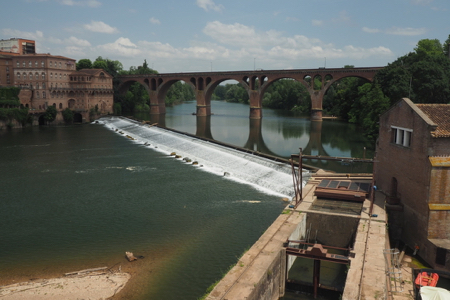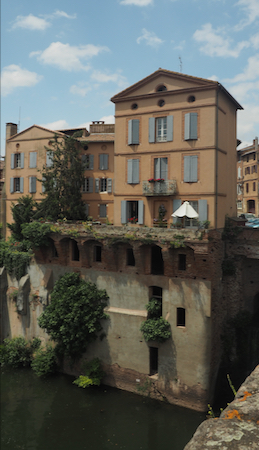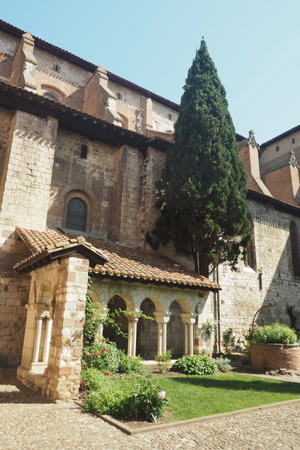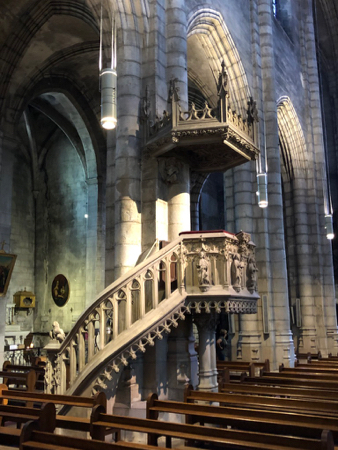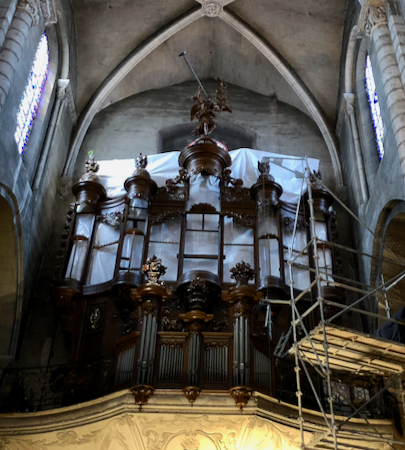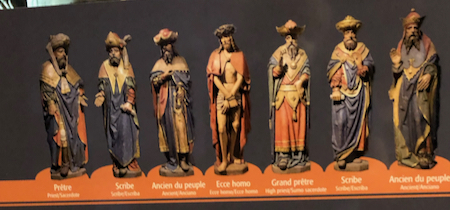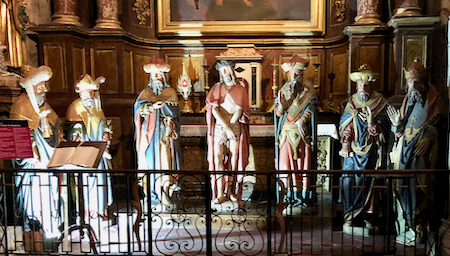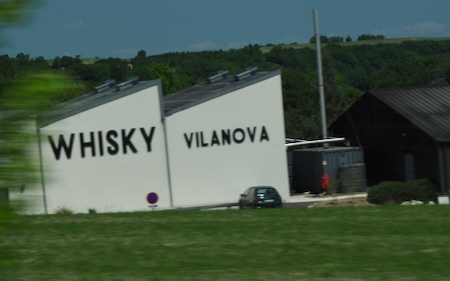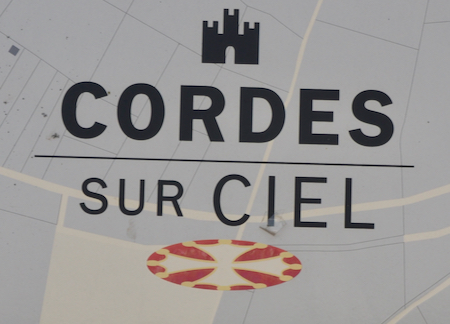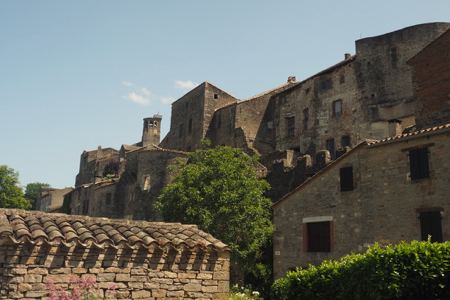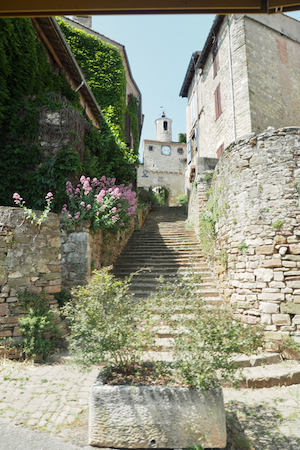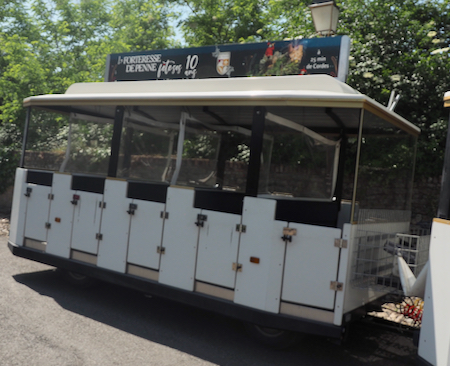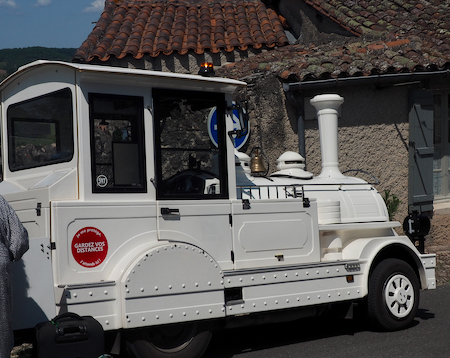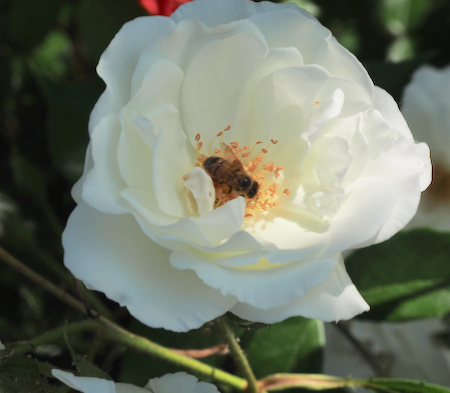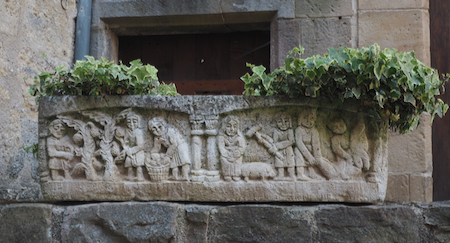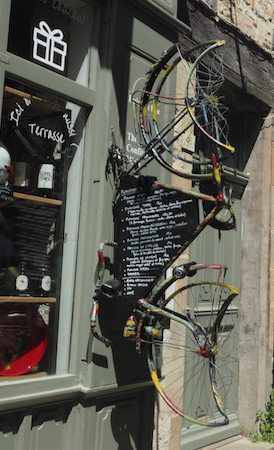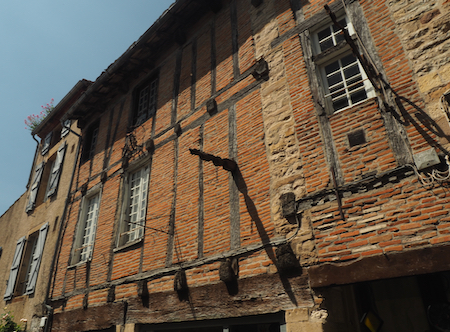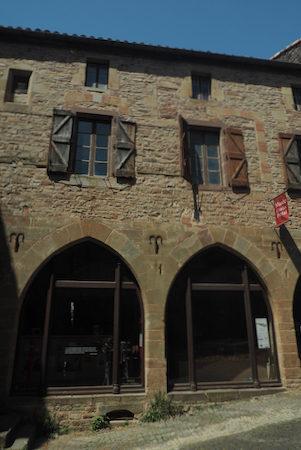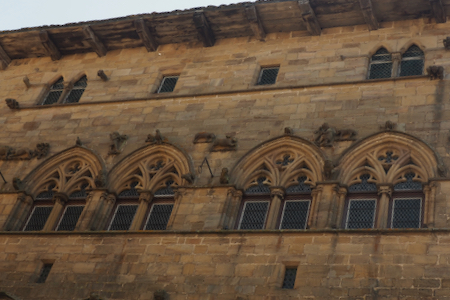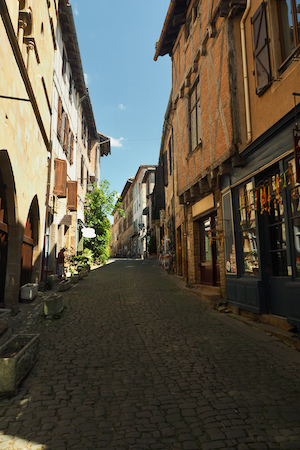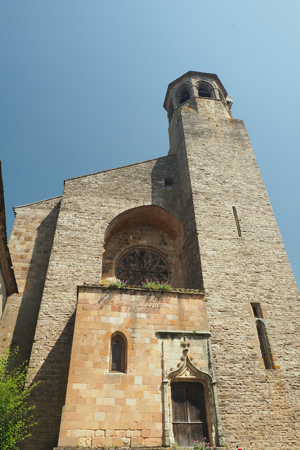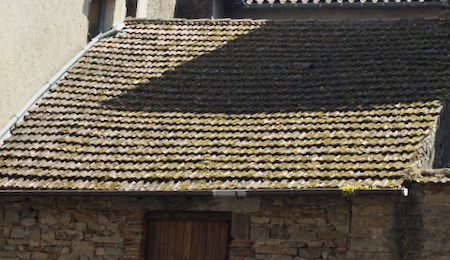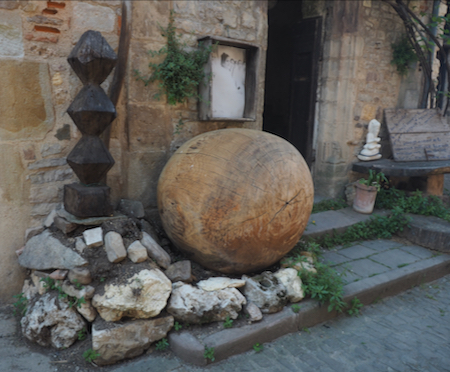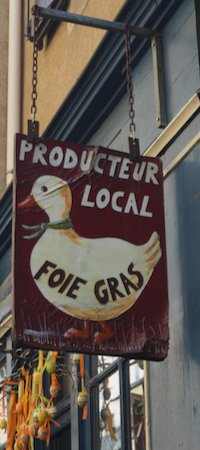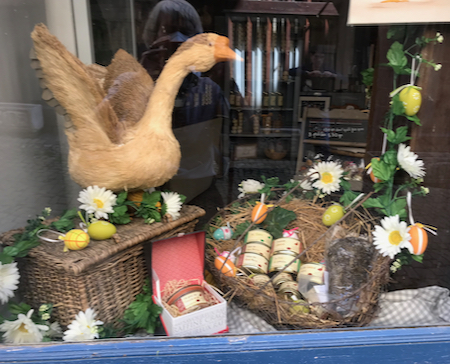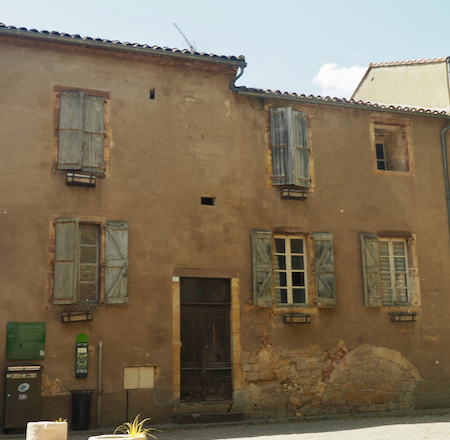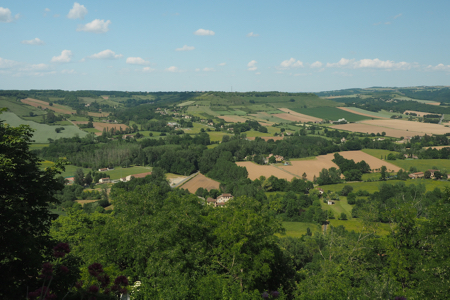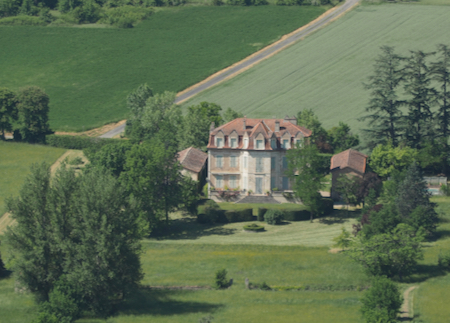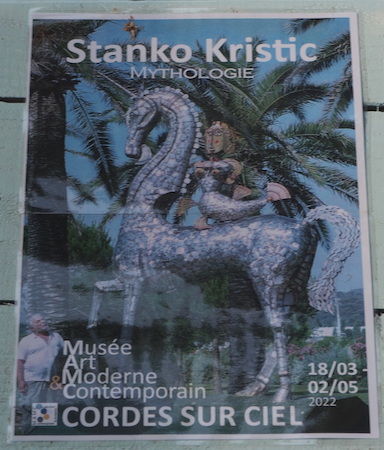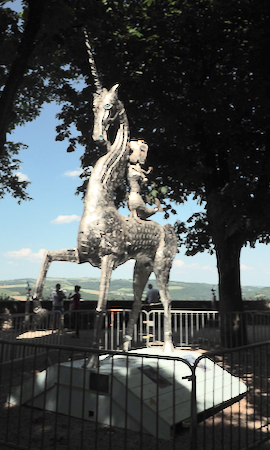Tues., 5/17/22 - Albi and Cordes
We were in Albi on both tours - for two days with Insight and a couple hours with OAT. What follows is a summary of tours taken in Albi with both groups.
Albi is a cute, historic town on the Tarn River. The old buildings are built with red brick because local stone is of poor quality. The richest merchant’s house belonged to the man who invented pastel dye (woad). The house is ornate with carved stone work. There are a few half-timbered houses along the cobblestone streets.
Sign for our hotel
Town fountain - it was hot enough today to want to walk through it
Decorated façade
Wooden shutters
Half-timbered building
House built in 1613
Yummy
Manhole cover - actually for water
Façade of the market
Every market has wine stalls
And lots of cheese
Candy
Butcher's stand
Bakery items
More bakery - different kinds of bread
Big shallots
Fish and oysters
The Albi Cathedral - St. Cecile Basilica is huge and very, very ornate. It took 200 years to build from 1280 to 1482 and used 14 million red bricks. It is reputed to be the largest brick building in the world.
The entrance is stone in the style of “flamboyant Gothic.” Everything about it makes you “look upward to God.” St. Cecile was a virgin martyr and her “relics” are in a side chapel.
Albi Cathedral - the St. Cecile Basilica
Albi Cathedral - Bell tower
Albi Cathedral - eastern end
Gargoyles of the Albi Cathedral
Albi Cathedral - intricate carvings above the entrances
Albi Cathedral - intricate carvings above the entrances
Albi Cathedral - intricate carvings above the entrances
Albi Cathedral - intricate carvings above the entrances
Albi Cathedral - ceiling carvings above the entrance
Albi Cathedral - intricate carvings
The interior of the cathedral is ever more ornate than the exterior. Nearly every square inch of space is covered. The walls and ceilings are beyond description. The photos can't begin to convey the majesty of the place.
Main altar
Ceiling of the nave
Ceiling detail
The organ
Organ detail
Small organ
The walls of most of the side chapels had geometric designs
More ceiling
Tomb under the floor
Altar, relics, and statue of St. Cecile
The Bishop’s Palace is next door to the Cathedral and now houses the Toulouse Lautrec Museum. His paintings were originally rejected by the Louvre so many of them are here in Albi. At the rear of the palace is an overlook above a lovely French garden (Jardins de la Berbie), with sculptured bushes in a design, and a wonderful view of the Tarn River and the 9th c. Pont Vieux bridge.
Bishop’s Palace
Bishop’s Palace (center and right)
Bishop’s Palace now houses the Toulouse Lautrec museum
In case you want a photo with Toulouse Lautrec
Windmill structure (with lights) on a wall of the Bishop's Palace
Jardins de la Berbie
View across the Tarn
Pont Vieux bridge (foreground)
Pont Neuf bridge
A long way down to the water from the patio or a long way from the water up to the lower door - take your pick
Also found in Albi is the St. Salvi Cloister and Church. The Cloister was very peaceful (or could have been without all the people there). The church is not as ornate as St. Cecile but had seven wooden statues called “Ecco Homo” - This is the Man. Six men with Jesus in a crown of thorns. Interesting and unusual.
St. Salvi Cloister
St. Salvi Cloister
St. Salvi Church
Church organ
Ecco Homo - picture
Ecco Homo - carvings
The afternoon was spent on an optional tour to a “Village in the Sky" - the hill town of Cordes. The town was built in the 13th c. by wealthy traders, especially tanners and weavers. The town has five walls of defense and is perched atop a hill with a 360° view of raiders or anyone approaching.
We rode a “train” up to an entry gate and walked uphill on cobblestones through a “fake” gate and a second gate into the town. The houses are what makes this town different. Our local guide explained the arched windows and doorways and sandstone building blocks. The arches (arcades) are unique but the figures sculpted onto the façades were interesting. At first they look like gargoyles, but they don’t spout water and they tell the story of the owner’s trade. For instance, the hunter’s house has a bowman following a dog ready to pounce on a boar. You can make up stories about the meaning of the figures.
From the bus
Town walls and buildings
Street scene - seems as though everything is up!
Transportation up to the town
Rose and bee
Decorative flower box
Clever sign
Old warehouse
Arched entries
Figures sculpted onto the façades
Street scene
There is a 15th c. Church of St. Michael, but it is not open to see inside. It has been built on and remodeled several times. St. Michael is the patron saint of hill towns.
Cordes is a cute, clean, town with nice stores and cafes, especially a chocolatier and a crisp cookie bakery.
Church of St. Michael
Mossy slate roof
Restaurant entryway
Foie Gras is big in this part of France
Goose and cans of foie gras
Wooden shutters
View of the countryside
A chateau
Sculpture in the park
After our return to Albi, the group walked to a restaurant in old town near the house where Toulouse Lautrec was born. Dinner was French with a version of artichoke ravioli as a starter, then veal in mushroom sauce, new potatoes and a tablespoon of spring vegetables (cooked to death), and apple crisp for dessert. It was good but took two hours.
